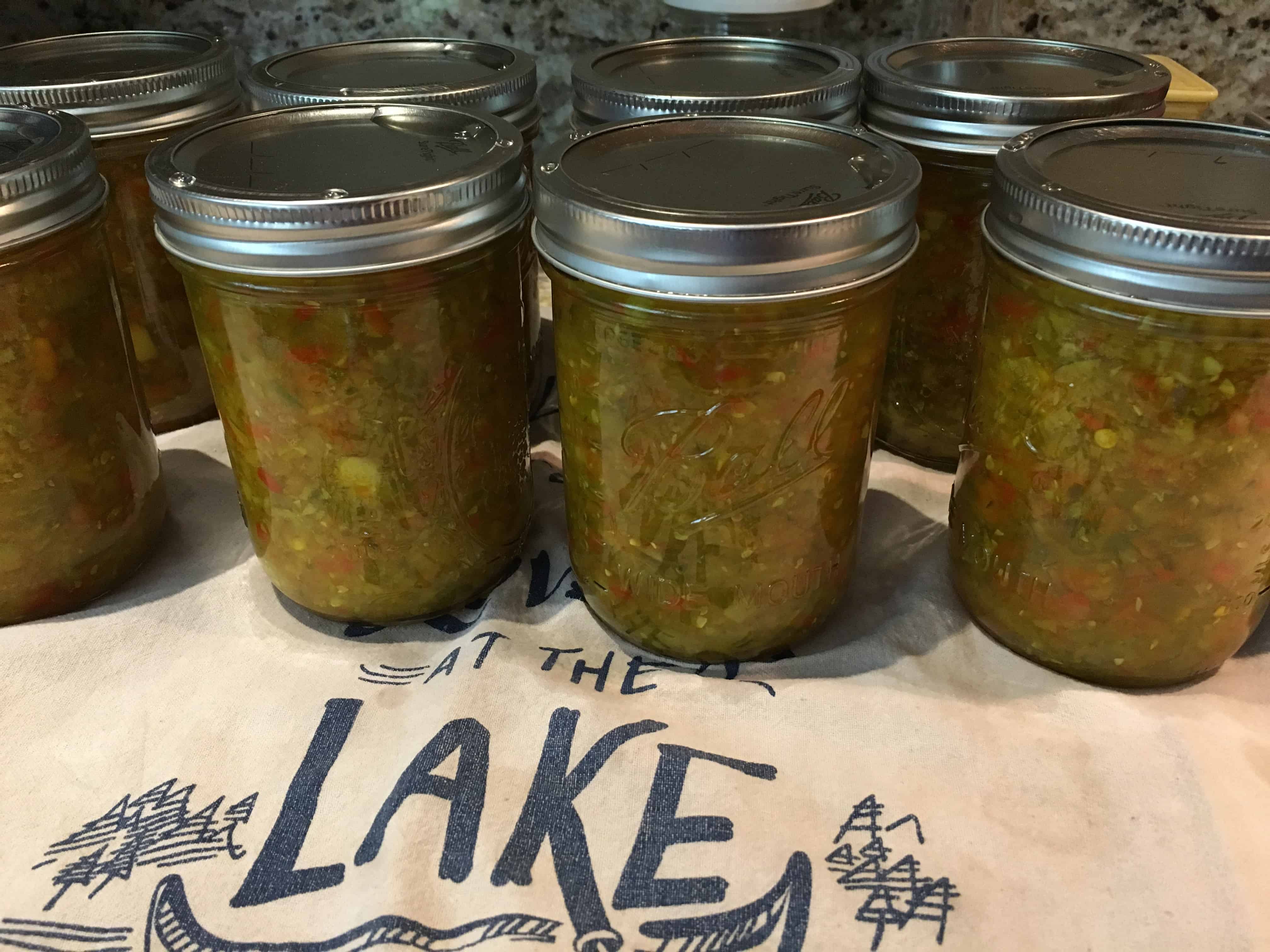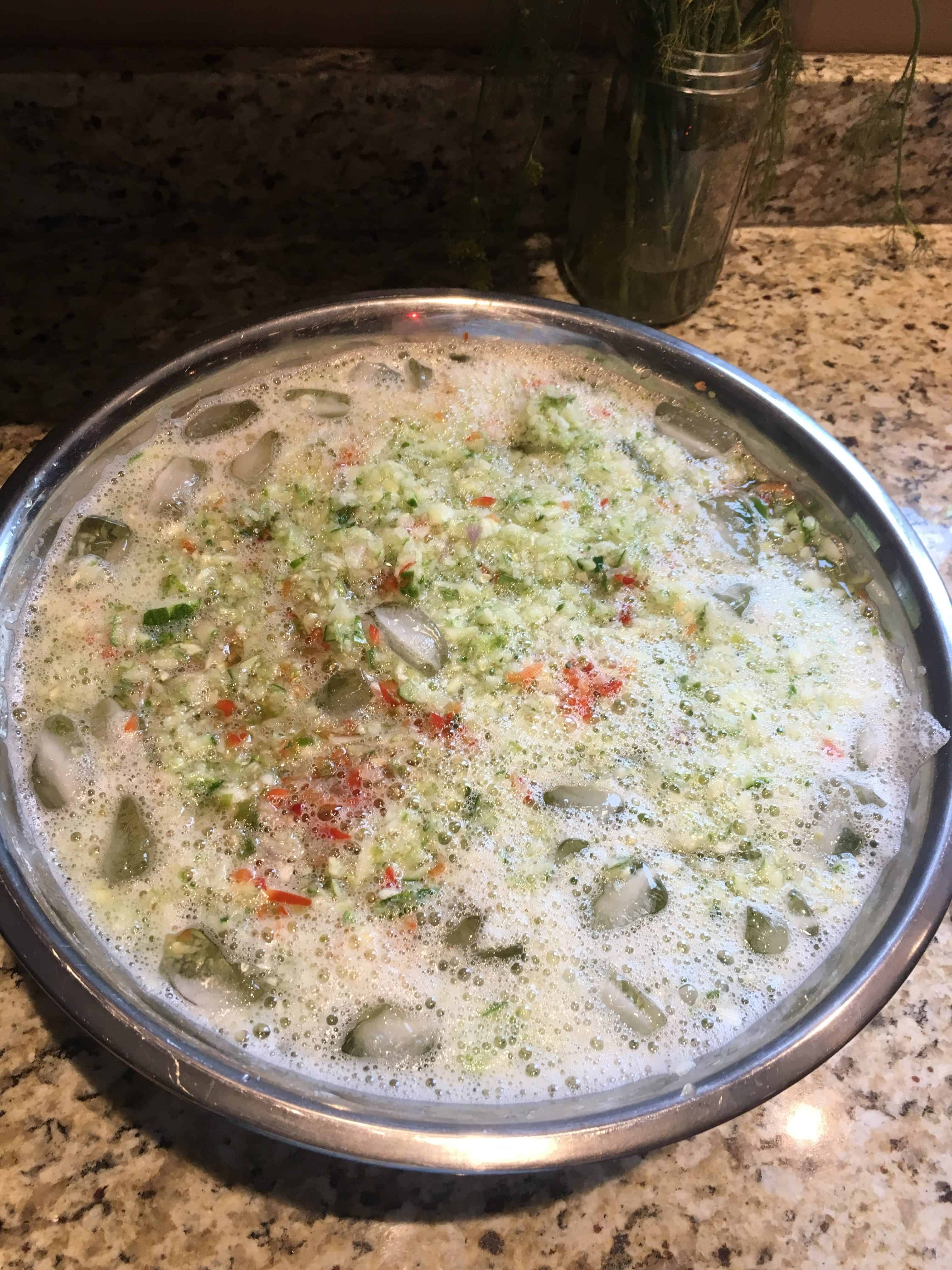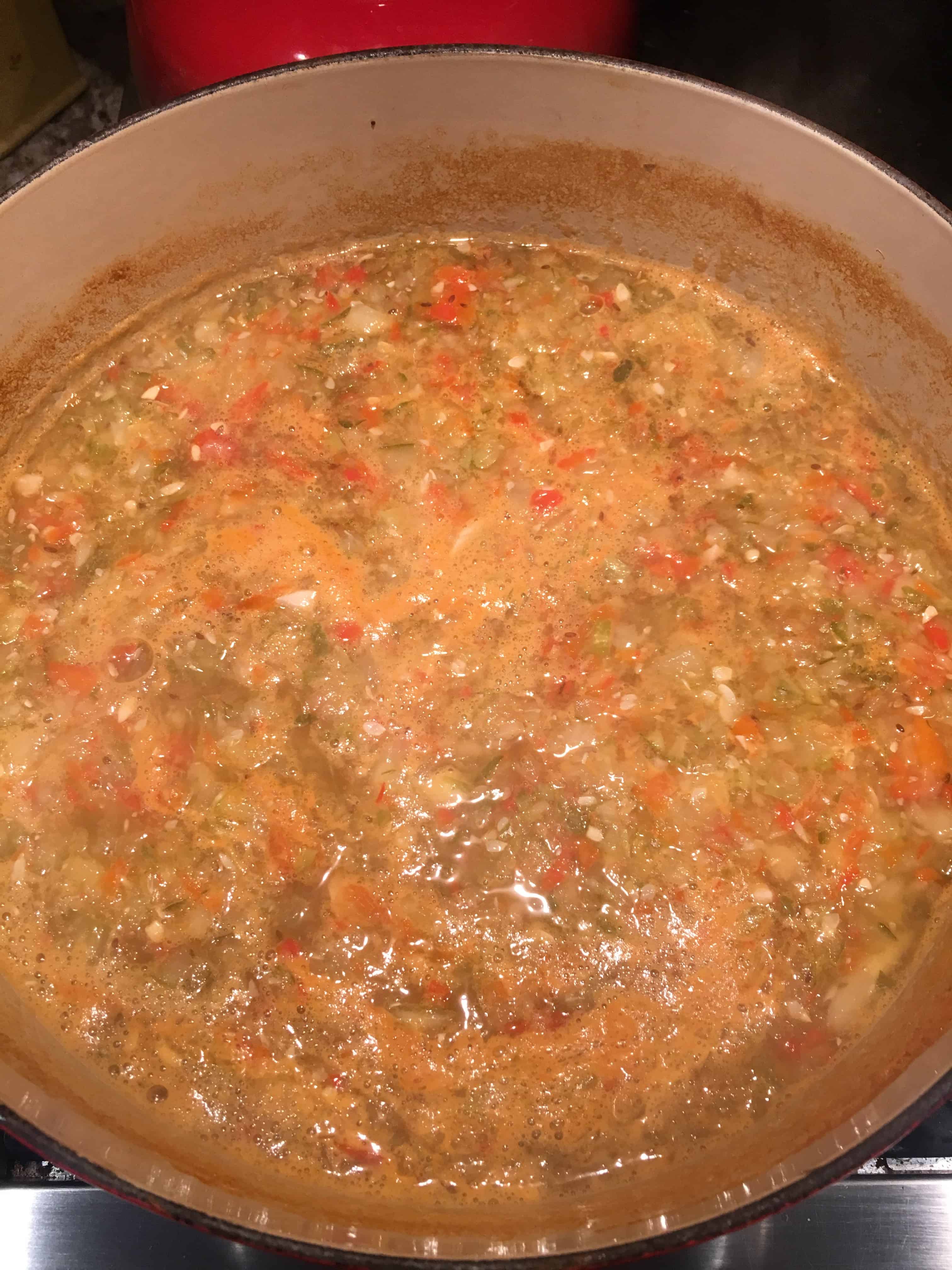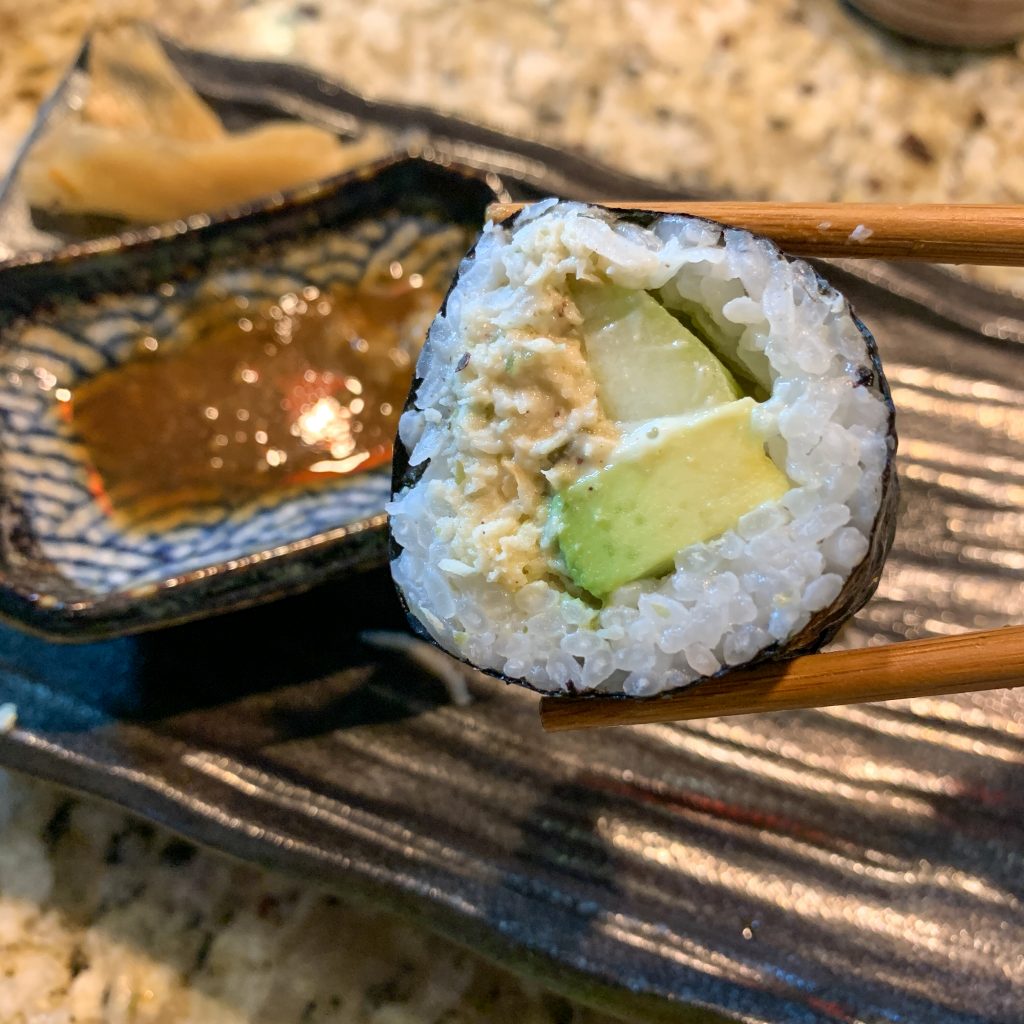Pickle Relish

#VeganMoFo18 Day 9 – Canning Pickle Relish
Please note, this post is meant as an overview of canning pickle relish and does not replace or represent itself to be an official guide for proper canning at home. It is important to consult safe canning resources, which are listed at the end of this post.
I don’t know about you, but I have a glut of pickling cukes this year, more than any other year! I may have planted too many. I’ve canned sweet and dill pickles, enough for me and my family, eaten fresh cucumbers at every meal and snack, given them away, and still have a spare refrigerator full of them. So when I saw the pickle relish recipes in the canning publication from North Dakota State University (NDSU) Extension Service, I thought I’d give it a try.

Just a part of the pickle glut at our house!
According to the Online Etymology Dictionary, the word relish first appeared in English in 1797. It comes from the French word, relais or reles, which means “something remaining, that which is left behind,” which is perfect in my case, with all these left behind pickling cukes! Gourmet Sleuth® has a great chart on the different kinds of relishes through history and cultures, including chow chow, chutney, piccalilli, and pickle relish; and notes that relish is distinct from a mere condiment in that it can be “eaten by the mouthful” with a main food.
I made both the dill and sweet pickle relishes. They are both really similar, so I’ll just outline the process for one, which goes basically for the other. You can find the recipes for both in the publication from NDSU.
I chopped up all the ingredients in my food processor. I know when I look at a jar of commercially-made pickle relish the pieces are uniform and square, but I just didn’t feel like taking the time to do a fine brunoise cut with every piece being a uniform 1/16-inch cube. For me, time is more important and I’m happy with oddly shaped, non-uniform, mixed size, small pieces from the food processor! The dill relish has pickling cukes and red bell pepper while the sweet relish has cukes, red and green bell pepper, and onions.

Chopped relish veggies
For the sweet relish, you soak the chopped vegetables with salt and ice for four hours, drain, and soak again with fresh water for another hour and drain again before proceeding. You then combine mustard seed, turmeric,
whole allspice, and whole cloves in a spice bag or cheesecloth pouch, add to white vinegar and sugar, bring to a boil to dissolve the sugar. This mixture is then poured over the drained chopped veggies and refrigerated for 24 hours. This disperses the spices throughout the vegetables and is an important step.

Chopped veggies in salted ice water
Dill relish is simpler. A brine is made of cider vinegar, dill seed, minced garlic, and salt and brought to a boil. The chopped veggies are added to the boiling brine, it’s returned to a boil and then simmered in it for 10 minutes.

Simmering relish in brine
For both relishes, the relish must be brought to a boil before being put into ready canning jars. You can use pre-sterilized jars from your dishwasher since the relishes will be processed in a boiling water canner for at least 10 minutes.
I’ve not tried the relish yet as I want to make sure the jars sit a while to allow the vegetables to absorb all that yummy brine before I open them. I usually give pickles at least a month before I open the jars. The relish did taste delicious before I canned it, so I’m very optimistic they will taste great! I’m looking forward to using the relish in salads, on sandwiches, and on carrot dogs this winter and into next spring and summer!
Making relish is a great way to use up all those over-sized vegetables, the ones that don’t fit into jars. I hope you give it a try!
Resources
There are some great resources available for home canning. Internet resources are fantastic as they are generally most up to date. There are some standby books, but remember to get new ones every few years to be current with updated guidelines.
Ball® Blue Book® Guide to PreservingNational Center for Home Food Preservation
North Dakota State University Extension Canning Publications
Washington State University Extension Food Preservation
Iowa State University Preserve the Taste of Summer Online Canning Class
Do you like this post? Please share....
[mashshare]
If you liked this post, you might like one of these:
Tags:

[Trī-māz-ing]
Cindy wants you to be Trimazing—three times better than amazing! After improving her health and fitness through plant-based nutrition, losing 60 pounds and becoming an adult-onset athlete, she retired from her 20-year firefighting career to help people just like you. She works with people and organizations so they can reach their health and wellness goals.
Cindy Thompson is a national board-certified Health and Wellness Coach, Lifestyle Medicine Coach, Master Vegan Lifestyle Coach and Educator, Fitness Nutrition Specialist, Behavior Change Specialist, and Fit2Thrive Firefighter Peer Fitness Trainer. She is a Food for Life Instructor with the Physicians Committee for Responsible Medicine, Rouxbe Plant-Based Professional, and Harvard Medical School Culinary Coach, teaching people how to prepare delicious, satisfying, and health-promoting meals.
She provides health and lifestyle coaching at Trimazing! Health & Lifestyle Coaching. Cindy can be reached at info@trimazing.com.
Subscribe to the Trimazing Blog
Receive occasional blog posts in your email inbox.
Subscribe to the Trimazing Blog
Receive occasional blog posts in your email inbox.




















